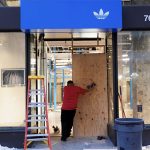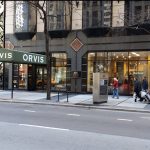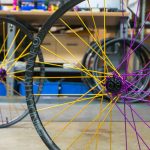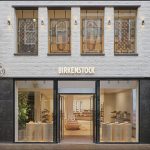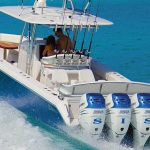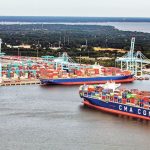Amy Roberts takes the reins as executive director of Outdoor Industry Association (OIA) Monday, after what could be described as a 43-month reality check. Roberts spent that time as director of sustainability at MEC, a Canadian retailer with a significant private label operation that has been engaged in a major rebranding initiative. The goal of rebranding was to make itself more relevant to an increasingly urban customer base.
The role gave Roberts an opportunity to apply sustainable sourcing tools she helped foster as an OIA Vice President from 2005 to 2011. It also provided insight into the practical value of consumer segmentation research, which has been a major OIA focus over the last year.
MEC, which stands for Mountain Equipment Co-op, is essentially the Canadian counterpart of Recreational Equipment Inc., (REI). Both companies are organized as cooperatives, headquartered in the Pacific Northwest, specialize in selling outdoor recreation gear and experiences, have extensive private label operations and have striven to adapt with eastward expansion into more urban markets.
The major difference between the two is size. MEC, which is based in Vancouver, British Columbia, currently operates 21 retail locations across Canada, compared to REI's more than 140 in the U.S. MEC sales grew 5 percent to $336 million in 2014, while REI sales grew 10 percent to $2.2 billion.
Roberts joined MEC in January 2012, following a stint as VP of Government Affairs, OIA. Roberts was hired by OIA in 2005 to manage lobbying efforts in Washington D.C. Along the way, Roberts played a key role in helping OIA members develop the Eco Index, a series of tools companies can use to measure the environmental footprint of the products they design, manufacture or sell. She also spearheaded the subsequent formation of the HIGG Index tool, which has been adopted by the much broader Sustainable Apparel Coalition, a group comprising the world's major apparel manufacturers and retailers, including Gap, H&M, Target and Walmart.
“I’m actually wrapping up at MEC this week and then headed to Boulder, CO next week to do what I can to support the OIA staff in all the work they are doing to serve the members during the [Outdoor Retailer] trade show,” Roberts told The B.O.S.S. Report July 22. “I am looking forward to jumping into the role at OR and then coming back here to formally move back to CO following the show.”
Despite Roberts' hectic schedule, she graciously agreed to respond to several questions to help The B.O.S.S. Report subscribers understand how her time at MEC prepared her to lead OIA, which represents more than 4,000 manufacturers, distributors, suppliers, manufacturers representatives and retailers in the human-powered outdoor recreation industry.
Below are excerpts from her written responses.
What was your biggest focus at MEC?
Developing MEC’s sustainability strategy, which is focused on both environmental sustainability and social responsibility, and ensuring those strategies are embedded in both the way MEC produces its own private-label products as well as considered as we curate the product assortment at the retail level. In this role, I have focused on both the supply chain (sourcing and manufacturing products) as well as our operational sustainability (retail, transport and operations).
How involved did you become in the mechanics of sourcing?
I have been very involved. Initially I was responsible for managing our Fair Labor program with our suppliers. MEC works with approximately 80 different factories in countries around the globe. We publish our factory list on our website and also report on supplier performance related to social responsibility. The role was challenging because I worked with suppliers ranging from apparel to backpacks, tents, bikes, coffee mugs, sleeping bags basically the whole range of what a member would be able to shop for at a specialty retailer. During my first couple of years at MEC, I visited about one third of our suppliers in person and worked with them through email, phone and in collaboration with our sourcing and production teams, as well as MEC’s buyers.
How much travel did this involve?
MEC has about 80 factories. I would usually do two or three trips per year, each about three weeks long. I visited suppliers in Turkey, China, Thailand, Vietnam, India, Taiwan, Canada and the U.S.
How have these new skills and knowledge prepared you to serve OIA members better?
In leaving OIA initially to come to MEC, I was seeking the opportunity to take many of the tools we had developed through the OIA Sustainability Working Group collaboration and put them to use in a real world setting. For instance, how do you use the Higg Index in assessing and improving sustainability in the supply chain and how does that knowledge roll up into a larger set of considerations that help you become a better retailer both in terms of building more environmentally friendly products and meeting the expectations of the consumer. I also had the opportunity to see how teams at MEC use research, like that produced by OIA, to build marketing and buying strategies and also how government regulations impact business. Finally, MEC has evolved from a brick-and-mortar retailer into an omnichannel retailer and has undergone a brand evolution during my time here, so I have had a front row seat to that change and will carry that experience back to OIA as we seek to serve specialty retail in a time of change.
What are the biggest changes you’ve seen in the sourcing realm in the last two years?
Transparency is no longer optional. NGOs and consumers have instant access to information today and there is an expectation that brands have full visibility into a complex supply chain, which is very challenging given the number of steps and suppliers involved in producing something as simple as a t-shirt. There is also a focus on the chemistry used in making performance outerwear and what the apparel industry is doing to appropriately manage chemical use beyond simply testing products at import. There is great support to move to greener chemistries.
Do you see outdoor brands, particularly in the apparel and footwear categories, supporting an independent, consumer-facing sustainability index in the next three years? Why or why not?
I believe there is a good chance we will see regulation out of the E.U. that will require consumer-facing communication focused on product. The industry is working to ensure that the methodology used stems from the Higg Index.
What challenges and opportunities do you see emerging for the industry as its leading retailers REI and MEC – focus more on urban consumers and activities? Are vendors and independent retailers keeping up? Every retailer has the opportunity to decide how they want to position themselves in the marketplace. I see opportunities for large and smaller retailers alike. In the broadening of what is considered “outdoor”, consumers look to specialty retailers to provide products that allow them to shop for a backcountry experience, a yoga class, trail running, urban biking and a casual night out with friends all at the same store. Consumers see all of this as their lifestyle and don’t necessarily separate their lives into backcountry, urban, fitness or lifestyle segments. They want to do it all. I think it is also important to remember that hardgoods are still a core business for specialty retail– that is certainly very true at MEC. OIA can support specialty retail by providing research that offers a look into consumer preferences into all of the above areas.
Aside from the crew at MEC, what will you miss most about living in Vancouver?
The amazing landscape of Vancouver- living in a city where the ocean truly does meet the mountains. We also made many friends here through my daughter’s ski racing program and we are going to be sad to say goodbye.

